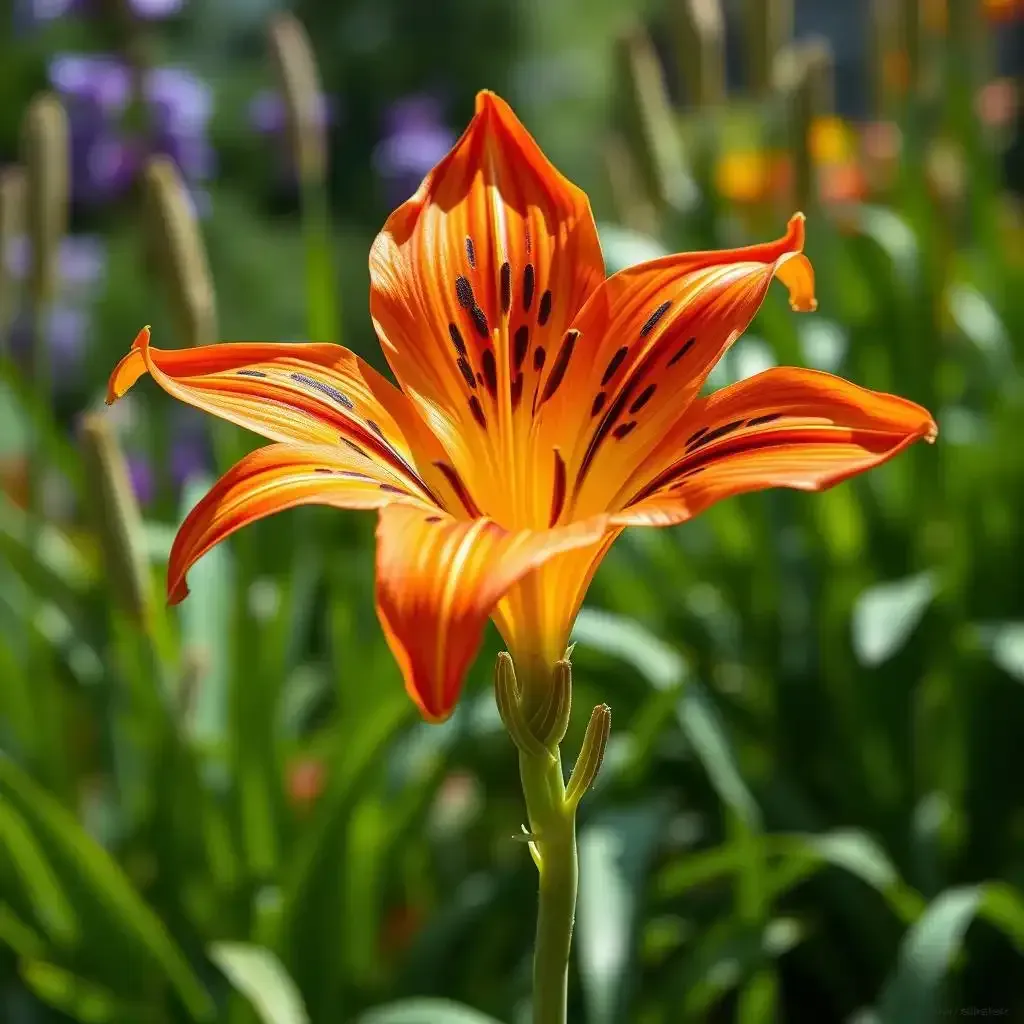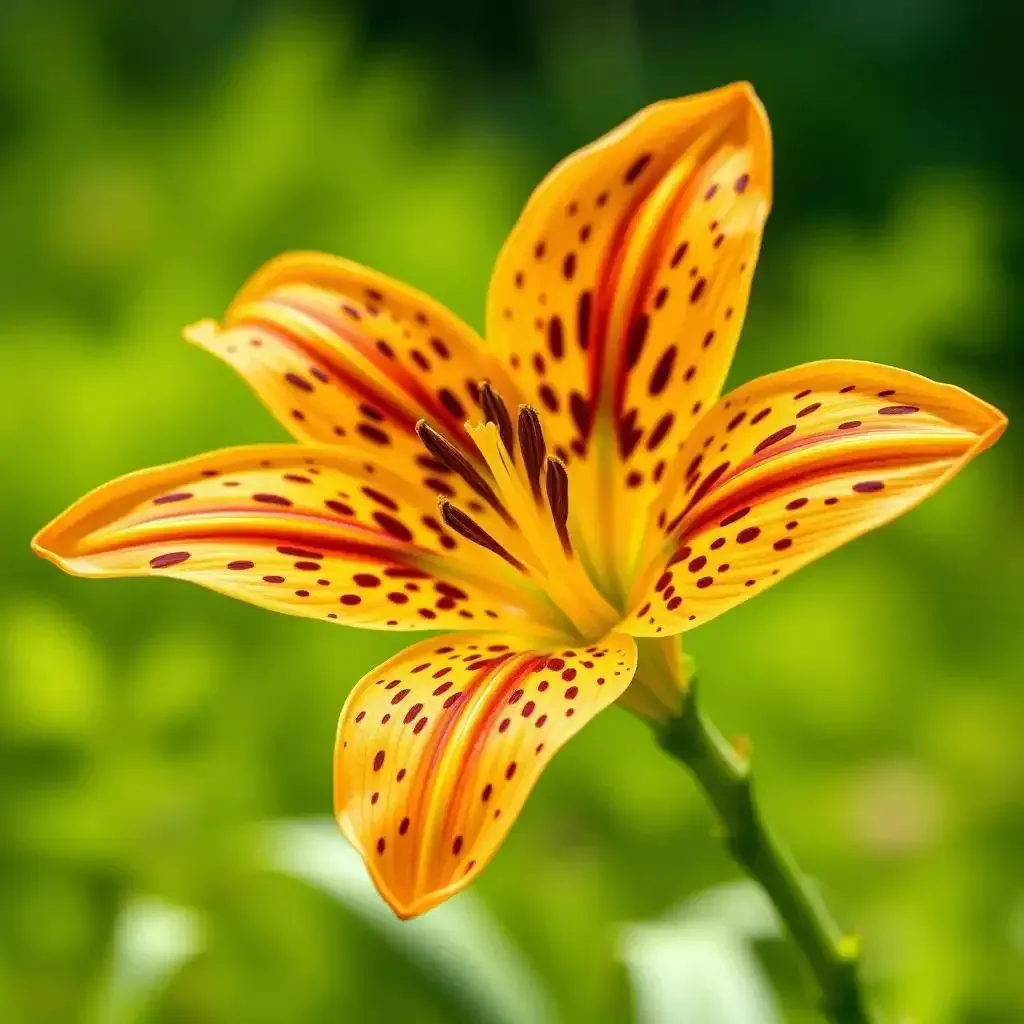Table of Contents
Welcome, fellow flower enthusiasts, to lilyflower.homes, your online haven for all things lilies! Today, we're diving headfirst into the captivating world of the tiger lily (Lilium tigrinum). This striking bloom, with its fiery orange petals dramatically speckled with dark spots, is a true showstopper. But how much do you *really* know about this magnificent plant? We'll be defining tiger lilies, exploring their unique characteristics, and providing you with expert tips on how to cultivate these beauties in your own garden. Get ready to learn everything you need to know to bring the vibrant energy of the tiger lily into your life. So, let's begin our trip into the heart of this captivating flower and find the magic behind its name – the tiger lily!
Defining Tiger Lilies: A Comprehensive Guide

Defining Tiger Lilies A Comprehensive Guide
What's a Tiger Lily, Anyway?
Hey there, fellow plant nerds! Let's talk tiger lilies! These aren't your grandma's dainty lilies. Think fiery orange petals, splashed with dramatic dark spots – it's like nature decided to paint a sunset on a flower. That's why they're called tiger lilies – those spots are like a tiger's stripes! They're pretty striking, right? They're also super interesting because of how they spread. Unlike some flowers that rely on bees, tiger lilies use something called bulblets. These are tiny little bulbs that grow along the stem. They drop to the ground and grow into new plants, so tiger lilies have a way of spreading themselves all around. It's like they're little plant ninjas, silently taking over the garden! Want to see some amazing tiger lily pictures? Check out this page on amazing tiger lily images!
Feature | Description |
|---|---|
Color | Fiery orange with dark spots |
Petals | Recurved (bending backwards) |
Height | Can grow up to 6 feet tall! |
Beyond the Beauty: Unique Characteristics
So, you've seen how gorgeous tiger lilies are, but there's more to these beauties than meets the eye. Did you know they're actually pretty good at spreading themselves around? They don't need bees or other pollinators to help them reproduce. Instead, they have these tiny little bulblets that grow along their stems. These bulblets drop off and create new tiger lilies. It's like they’re planting themselves! Pretty clever, huh? It’s a bit like a plant version of having lots of little babies. Learning about this made me appreciate them even more. For more amazing facts and even painting ideas, check out this article on tiger lily art. It’s really inspiring!
- Bright orange color
- Dark spots on petals
- Bulblets for reproduction
- Tall stems
Tiger Lily Identification: Spotting These Striking Blooms

Tiger Lily Identification Spotting These Striking Blooms
The Telltale Spots: A Tiger's Stripes
Okay, so you want to identify a tiger lily? The first thing that'll jump out at you is the color – a vibrant, almost fiery orange. Think of a sunset, but on a flower! But it's not just the color; it's those incredible dark spots scattered across the petals. They’re like a tiger's stripes, hence the name! These spots aren't just random dots either; they're usually quite evenly spaced and create a really striking pattern. I mean, seriously, it's like nature's own masterpiece. Want to see more amazing pictures? Check out this page on ! You won't believe how many variations there are.
Feature | Description |
|---|---|
Color | Fiery orange to reddish-orange |
Spots | Dark brown or purplish-black, fairly evenly spaced |
Petal Shape | Recurved (bending backwards) |
Beyond the Spots: Other Identifying Features
But wait, there's more! Don't just focus on the spots. Look at the overall shape of the flower. Tiger lilies have petals that curve backward – they're called recurved petals. Imagine a graceful ballerina's pose – that's kind of what the petals do! They're not stiff and upright like some other lilies; they're more relaxed and simple. And the stems? They can get really tall, sometimes reaching up to six feet! That's taller than most kids! Another clue? Those little bulblets growing along the stem – they're a dead giveaway. For some cool painting ideas featuring these beauties, check out this post on . It's seriously inspiring!
- Recurved petals
- Tall stems (up to 6 feet!)
- Presence of bulblets along the stem
- Strong, slightly spicy scent
Where to Spot Them: Habitat and Distribution
Tiger lilies aren't shy; they like to make a statement! You'll often find them in meadows, along roadsides, and even in some gardens. They're pretty adaptable, but they prefer full sun or partial shade. They're native to parts of Asia, but they've spread around the world, becoming naturalized in various places. So keep your eyes peeled when you're out and about – you might just stumble upon a stunning patch of these fiery beauties! If you're looking for more information on their meaning, check out our guide on the pink tiger lily flower. It's a fascinating read.
“The beauty of a tiger lily lies not just in its vibrant colors, but in its resilience and ability to thrive in diverse environments.” - Anonymous Flower Enthusiast
Cultivating Tiger Lilies: Planting and Care Tips for Thriving Blooms

Cultivating Tiger Lilies Planting And Care Tips For Thriving Blooms
Getting Started: Planting Your Tiger Lily Bulbs
Planting tiger lily bulbs is like giving a tiny tiger a cozy den to grow into a magnificent beast! First, choose a spot that gets plenty of sunshine, maybe 6 hours a day. Think of it like giving your tiger a sunbathing spot. Then, dig a hole about 6 inches deep – think of it as a cozy little burrow. Place the bulb pointy-side up (this is important!) and cover it with soil. Water gently after planting. It’s that simple! Want to see some really gorgeous tiger lilies? Check out these for inspiration!
- Choose a sunny spot
- Dig a 6-inch hole
- Plant pointy-side up
- Water gently
Nurturing Your Fiery Friends: Ongoing Care
Once your tiger lilies are in the ground, they're not entirely self-sufficient. They still need a little TLC! Water regularly, especially during dry spells. Think of it as giving your tiger a refreshing drink on a hot day. Mulch around the base of the plants to help retain moisture and suppress weeds. Mulch acts like a tiger's camouflage, protecting it from the elements. Fertilize lightly in spring with a balanced fertilizer. This is like giving your tiger a special energy boost! Need some more tips? Check out this guide on — it's full of beautiful images and inspiring ideas!
Task | Frequency | Why? |
|---|---|---|
Watering | Regularly, especially during dry periods | Keeps the soil moist |
Mulching | Once or twice a year | Retains moisture, suppresses weeds |
Fertilizing | Lightly in spring | Provides nutrients for growth |
Final Thought
From their striking appearance to their fascinating reproductive methods, tiger lilies offer a captivating blend of beauty and intrigue. Whether you're an experienced gardener or just starting out, understanding the nuances of tiger lilies allows you to appreciate and cultivate these vibrant flowers with greater success. Remember, the key to a thriving tiger lily lies in providing the right conditions – the right soil, sunlight, and care. So, go forth and free the fiery beauty of the tiger lily in your garden! Happy gardening!